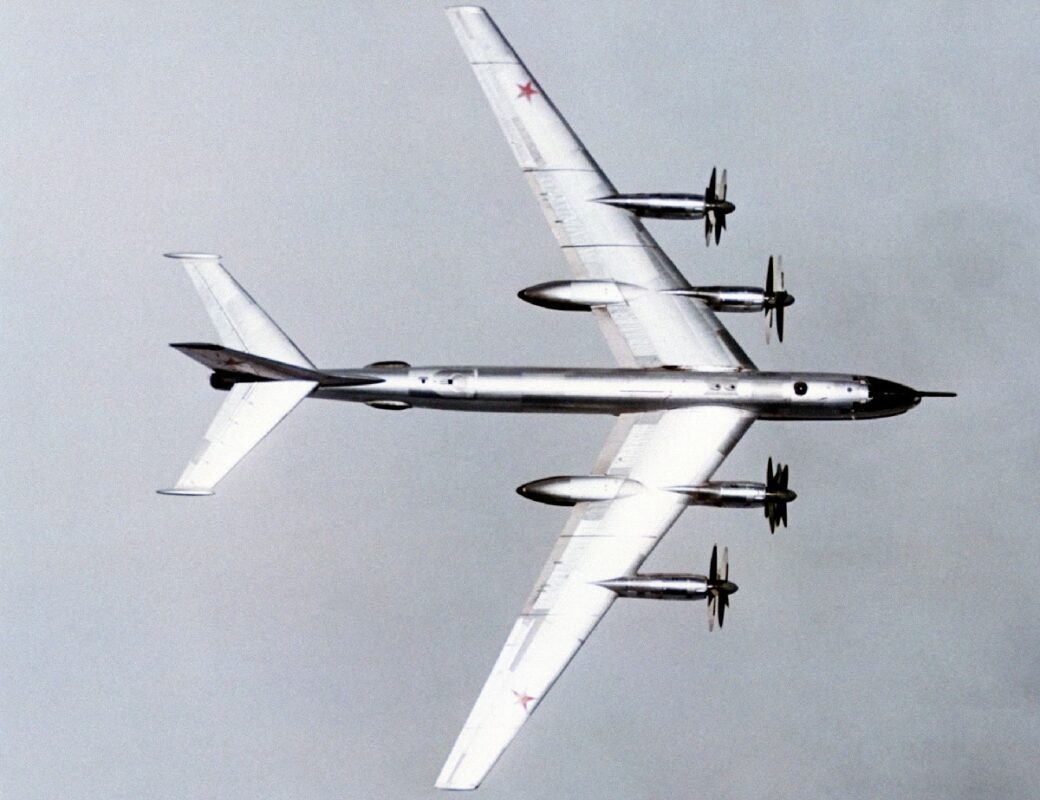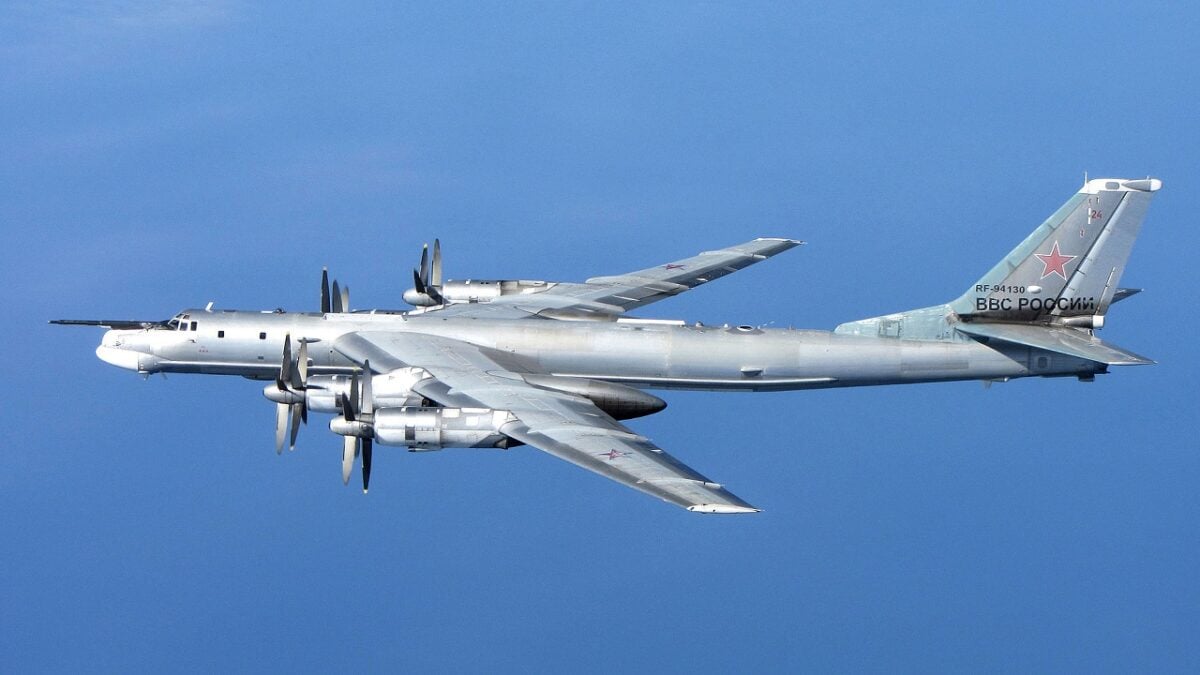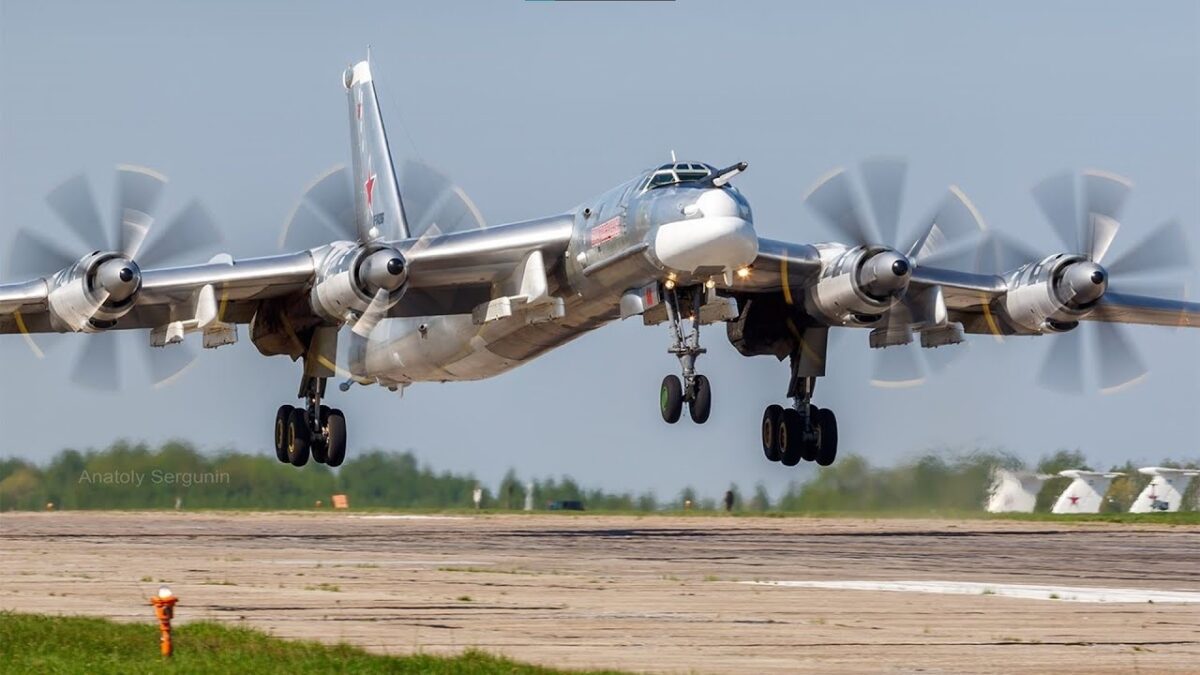If Russia’s air force believes a Tu-95 Bear bomber is willing to threaten Alaska, why wouldn’t it be a difference-maker in the war in Ukraine? The Tu-95 was in the news after October 18 for flying into Alaska’s Air Defense Identification Zone. The United States had to scramble two F-16 fighters to intercept the Tu-95s before they flew closer to Alaska’s air space. One would think if the Kremlin is willing to allow provocations with the bomber against the Americans, the high command would be heavily dependent on the Tu-95 over Ukraine. Let’s take a closer look at the Tu-95 to examine its role in the war.

Image: Creative Commons.
Good Thing the Ukrainians Have Denied Russian Air Dominance
The biggest reason is that Russia failed early on to suppress enemy air defenses that would have given Russian bombers unabated paths to ground targets. The Tu-95 has been updated to the MS version that can fire Kh-101/102 and Kh-55 cruise missiles, so it can still fly in Russian air space to launch munitions. For safety, the Tu-95s also fly over Belarus as well as over the Caspian Sea or Sea of Azov.
Tu-95 Taking On Enemy Logistical Targets
The Bear is being used to destroy and damage infrastructure carrying weapons that have been shipped to Kyiv through Poland. The Tu-95 also targets fuel dumps, rail lines, arms factories, and airfields. But the cruise missiles can only go after these fixed targets and not trucks transporting donated weapons systems and ammunition that Ukraine needs.
Keep Firing Cruise Missiles
Russia has depended on the Tu-95 since the beginning of the war. These are for cruise missile launches and not free-falling bombs as Piotr Butowski wrote for The War Zone. But the cruise missiles are powerful. The Kh-101 is about 5,000 pounds. It is navigated by satellite and has terrain contour matching accomplished by radar, so it is highly maneuverable. Butowski believes the numbers of Kh-101s are dwindling and may have been reduced to around one hundred as of mid-September. Kh-55 missiles were highly utilized in Syria, but these missiles have been a less popular choice during the war in Ukraine.
This Is a Big Airplane
The Tu-95, which first flew in 1952, is over 150 feet long with a wingspan of 164 feet. It resembles a B-52 but with turboprops instead of jet engines. Up to seven crewmen are on board and the Bear even has a tail gunner. Along with the size, the Tu-95 has mega-range. It can fly at least 7,800 miles at 400 miles an hour. The MS variant has a range of 9,300 miles and set a record in 2010 for flying 43 nonstop hours. This workhorse bomber was meant to deliver nuclear bombs to the United States during the Cold War. It now has new missions such as anti-submarine, electronic warfare, and reconnaissance.
Ukraine Knows How to Eliminate Cruise Missiles
The Tu-95 would have performed better had it not been for the supply of Ukrainian surface-to-air missile systems that are destroying Russian cruise missiles. On October 19, the Tu-95, along with a Tu-160, tried to shoot six cruise missiles.
Three were downed by SAMs and a fourth was shot down by a Ukrainian fighter. Russia is running low on cruise missiles and Ukraine is getting better at blasting them out of the sky.

A Russian Tu-95 Bear ‘H’ photographed from a RAF Typhoon Quick Reaction Alert aircraft (QRA) with 6 Squadron from RAF Leuchars in Scotland. RAF Typhoon Quick Reaction Alert aircraft were launched from RAF Leuchars to determine the identity of unknown aircraft that approached the NATO Air Policing Area north of Scotland and could not be identified by other means. The aircraft were subsequently identified as Russian military reconnaissance (Bears). The Russian Bears aircraft remained in international airspace as they are perfectly entitled to do. Organization: RAF Object Name: LEU-OFFICIAL-20140423-0326-0015 Category: MOD Supplemental Categories: Equipment, Aircraft, Foreign Aircraft Keywords: QRA, Russia, Russian, Bear, Aircraft, Quick Reaction Alert, Intercept Country: Scotland

Tu-95 bomber. Image Credit: Creative Commons.
It Is Possible to Tame the Bear?
This was not foreseen by the Russian air force. At this stage in the war, the Tu-95 should have manhandled more ground targets with ease. The Bear won’t chance flying over Ukraine due to the Ukrainian air defense umbrella over major cities. But the bomber will likely shift more to targeting critical infrastructure such as power plants and public places where civilians are located. The Tu-95 is still a force with its massive payload, great range, and proven combat ability. It will be up to the Ukrainians to maintain their air defenses until Russia runs out of cruise missiles.
Expert Biography: Serving as 1945’s Defense and National Security Editor, Dr. Brent M. Eastwood is the author of Humans, Machines, and Data: Future Trends in Warfare. He is an Emerging Threats expert and former U.S. Army Infantry officer. You can follow him on Twitter @BMEastwood. He holds a Ph.D. in Political Science and Foreign Policy/ International Relations.

